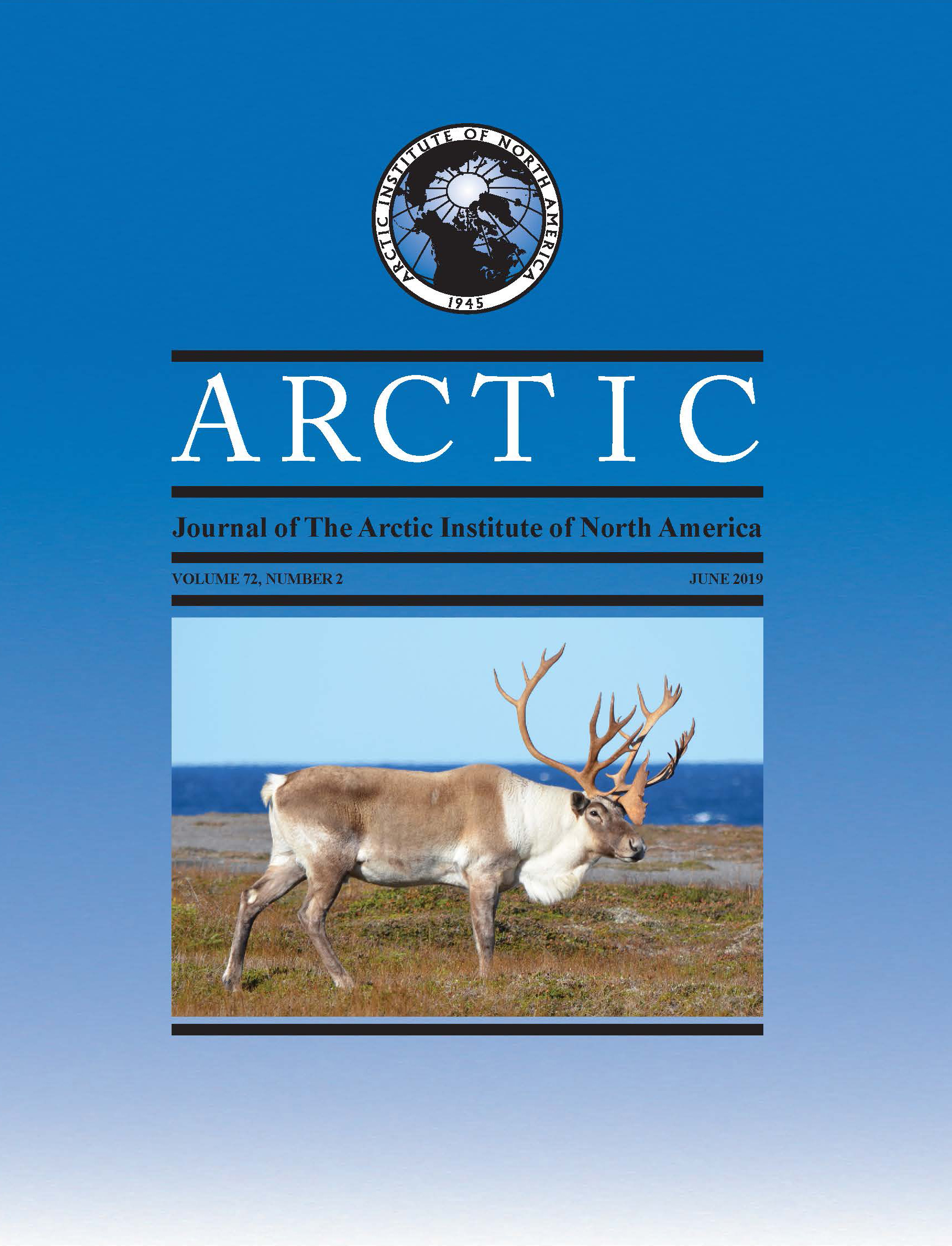Using Video to Evaluate Depth and Velocity Selection by Arctic Grayling (Thymallus arcticus) in Pools of an Engineered Tundra Stream
DOI:
https://doi.org/10.14430/arctic68171Keywords:
Arctic grayling, habitat selection, ecohydraulics, video monitoring, natural channel design, Thymallus arcticusAbstract
We evaluated pool use by Arctic grayling (Thymallus arcticus) in an engineered stream in the Canadian Barrenlands at the summer background flow (1.0 l/s) and at enhanced flows (9.9 l/s and 21.9 l/s) similar to those during the spring spawning period. We used an acoustic Doppler velocimeter to measure and map out point velocities (horizontal and vertical) in five study pools. The positions of adult Arctic grayling were monitored for each flow condition using visual surveys and a novel video assessment technique. Although fish mobility limited pool selection at the summer background flow, the highest use of pools by fish during enhanced flows occurred where pool designs incorporated scour holes or downstream sills to provide larger amounts of relatively deep water. Within those pools, grayling selected for locations with depths between 0.20 m and 0.30 m and near-zero vertical velocities (−0.02 m/s to 0.04 m/s). Fish selected near-zero horizontal velocities(0.00 m/s to 0.04 m/s) for resting and higher velocities (0.12 m/s to 0.20 m/s) for feeding. In contrast, grayling tended to show local avoidance of areas with horizontal velocities above 0.2 m/s or vertical velocities above 0.04 m/s. Although findings are likely site specific, our study contributes towards the development of size, depth, and velocity criteria for Arctic grayling habitat; this information can promote effective designs for habitat compensation and fish passage projects. We also present a novel video monitoring method that can be easily deployed at remote locations.
Downloads
Downloads
Published
Issue
Section
License
Copyright (c) 2019 ARCTIC

This work is licensed under a Creative Commons Attribution 4.0 International License.


